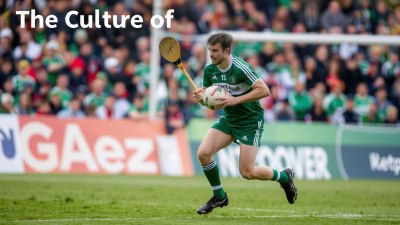The Culture of Gaelic Football and its Irish Roots
Explore the rich culture of Gaelic football and its deep Irish roots through tradition, community, and history.

Image created with Flux Schnell
Gaelic football, a quintessential Irish sport, is more than just a game; it embodies the spirit, culture, and rich heritage of Ireland. With its unique blend of skills and passionate fan engagement, it has become a vital aspect of Irish identity, reflecting a community's enduring affinity for sports, camaraderie, and tradition. The story of Gaelic football is deeply interwoven with Irish culture, representing the struggles and triumphs of a nation shaped by its sporting endeavors.
Originating in Ireland, Gaelic football is a modern version of an ancient form of football played since the medieval period. The game's roots can be traced back to various folk games played in different regions of Ireland, where communities engaged in recreational activities that involved kicking or carrying a ball towards a designated goal. The need for organization and standardization emerged in the late 19th century, leading to the formation of the Gaelic Athletic Association (GAA) in 1884. This pivotal moment marked the beginning of formalized rules and governance for the sport, establishing guidelines that merged various local games into a cohesive set of regulations.
The establishment of the GAA not only represented a turning point for Gaelic football but also for Irish cultural nationalism. During a time when Ireland was seeking to reaffirm and preserve its distinct identity in the face of British rule, the GAA emerged as a powerful symbol of national pride. Promoting Gaelic games was seen as part of a larger movement to reinvigorate Irish culture and heritage, which had been eroded by colonial influences.
Community and Identity
The cultural significance of Gaelic football extends beyond the pitch. It plays a pivotal role in fostering community spirit and cohesion. Local clubs serve as the backbone of the sport, where players, fans, and families come together. In small towns and rural villages, the local team is often central to communal life, with matches drawing large crowds and uniting people from various backgrounds. Gaelic football provides not just entertainment; it creates a sense of belonging and connection within the community.
Every summer, as the GAA championships unfold, towns and villages across Ireland come alive with energy and excitement. The atmosphere surrounding a Gaelic football match is unique. From the vibrant colors of team jerseys to the sounds of cheers, chants, and live music in the stands, the experience is electric. Supporters proudly showcase their allegiance through flags, banners, and intricate face paint, contributing to a festival-like atmosphere that transcends the mere contest of skill on the field.
The Role of Tradition
Tradition plays a crucial role in Gaelic football, not just in its rules and gameplay but also in the ceremonies and customs surrounding the sport. From the pre-match rituals performed by players and coaches to the post-match celebrations, the rich tapestry of tradition intertwines with contemporary practices. For players, wearing the colors of their club signifies heritage and pride, along with a commitment to continuing the legacy of those who played before them. Many clubs operate under specific mottos or creeds that encapsulate their values, reinforcing the culture of perseverance, teamwork, and respect.
One whimsical tradition is the ceremonial 'blessing of the ball,' where a priest may bless the match ball before a game, invoking good luck for the players. Games are often preceded by the haunting sounds of traditional Irish music, which resonates with the crowd and amplifies the emotional intensity of the event. Such traditional elements deepen the ties between the sport and its cultural roots, reminding participants and supporters alike of the shared history that defines Gaelic football.
Gender and Inclusivity in Gaelic Football
In recent years, the Gaelic football community has made significant strides towards gender inclusivity. While traditionally seen as a male sport, the GAA has embraced women's participation, with women’s Gaelic football leagues gaining momentum and recognition. The establishment of the Ladies Gaelic Football Association has been pivotal in promoting female involvement and fostering equality in the sport. The transformation has resulted in increased visibility and support for women athletes, showcasing their talents on both local and national stages.
With women now actively participating and excelling at all levels of the game, the dynamic of community support has expanded. Families often come out in full force to support daughters, sisters, and wives, aligning with the overarching ethos of community engagement found in Gaelic football. The growing presence of women in the sport helps challenge stereotypes and foster a more inclusive environment for all athletes.
The Global Reach of Gaelic Football
The influence of Gaelic football now extends beyond Irish borders. The sport's unique characteristics and cultural resonance have attracted followers and players worldwide. Irish diaspora communities have established clubs in places as far-flung as the United States, Australia, and Canada, where they actively participate in Gaelic football leagues. These clubs foster a sense of belonging for expatriates, allowing them to stay connected to their cultural roots through the sport.
International tournaments like the annual GAA World Games further highlight Gaelic football's global reach, where teams from various countries come together to compete and celebrate their shared love for the sport. This globalization enriches the tradition of Gaelic football, as it transcends geographical limitations and becomes a vehicle for promoting Irish culture worldwide.
The Future of Gaelic Football
As Gaelic football embraces modernization and innovation, the future holds both opportunities and challenges. Advances in technology have allowed for better training methodologies, enhancing athletes' performance and overall gameplay. Digital platforms provide new avenues for promoting matches and building fan engagement. However, as the sport evolves, it's crucial for the GAA and its stakeholders to strike a balance between preserving tradition while adapting to contemporary expectations and innovations.
Moreover, as Gaelic football continues to grow globally, maintaining a sense of authenticity amidst commercialization will be vital. The GAA's commitment to promoting amateurism while supporting competitive endeavors will shape the ethos of the sport in the coming years. Ensuring that the community spirit remains at the heart of Gaelic football will be essential to preserving its cultural significance.
Gaelic football is more than a sport; it is a cultural phenomenon that spans generations. Its roots are deeply embedded in Irish history, serving as a reminder of resilience, community, and identity. As Gaelic football continues to flourish, it echoes the sentiments of its ancestors, ensuring that the passion and spirit of the game remain alive for future generations. By honoring tradition, embracing inclusivity, and fostering community cohesion, Gaelic football will undoubtedly remain a defining element of Irish culture for years to come.











